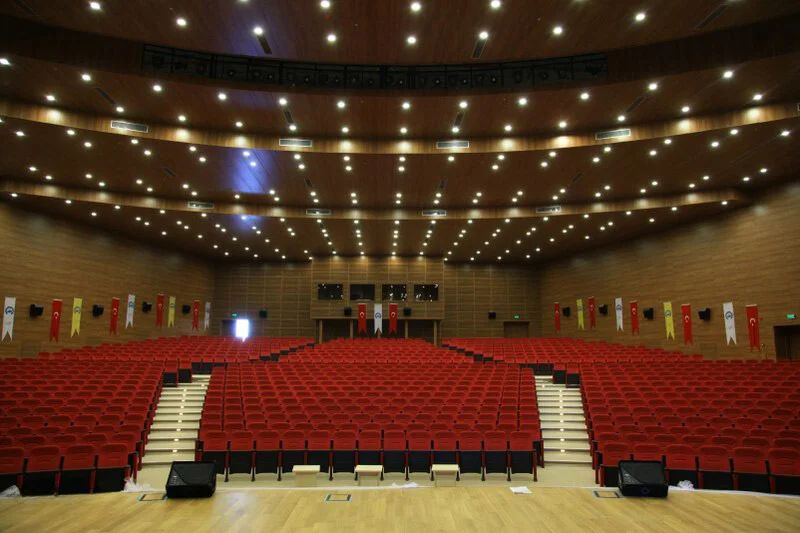Walking into a theater where every seat looks spotless, feels comfortable, and functions smoothly creates a strong impression. But as every venue owner or project manager knows, keeping theater hall seats in top condition requires more than just a quick wipe-down. Theater hall seats maintenance isn’t just about appearances—it directly impacts visitor experience, safety, and even the lifespan of your investment. So, how do professionals worldwide keep their seats looking and performing at their best year after year? Let’s dive in.
Table of Contents
Theater Hall Seats Maintenance: Where It All Begins
When you think about theater hall seats maintenance, what comes to mind first? Most professionals immediately think about cleaning and repairs. Yet, true maintenance goes beyond that—it involves structured routines, proper materials, and trained staff who know the difference between simple wear and structural issues.
A well-planned maintenance schedule usually includes daily visual inspections, weekly cleaning, and quarterly deep checks for upholstery, fasteners, and mechanisms. Skipping these steps can lead to expensive overhauls later on. Have you ever seen how a loose hinge turns into a broken seat after one busy weekend? That’s exactly what proactive maintenance prevents.
Why Regular Inspections Save Money
Inspections might sound time-consuming, but they actually reduce downtime. By detecting early signs of metal fatigue, fabric thinning, or foam compression, managers extend seating life by years. This practice turns what could have been a costly replacement into a minor adjustment.

Theater Seat Maintenance: Small Efforts, Big Results
Theater seat maintenance doesn’t need to overwhelm your staff. In fact, small daily habits can add years of service life. Assigning staff members to check for chewing gum, spilled drinks, or torn upholstery each night has proven to be highly effective in many international venues.
Cleaning Theater Seats the Right Way
Have you ever wondered why some seats fade or crack much faster than others? The secret lies in cleaning methods. Using harsh detergents damages upholstery fibers and weakens protective coatings. Instead, professionals rely on neutral pH cleaners and microfiber cloths. For example, vacuuming fabric seats once a week removes dust particles that slowly grind into the fibers, reducing premature wear.
And what about leather or faux-leather upholstery? A soft conditioner applied every six months helps preserve flexibility and color depth.
Hall Chair Care That Extends Lifespan
Hall chair care often gets overlooked in large auditoriums. With hundreds or thousands of seats, it may feel impossible to give each chair individual attention. But dividing seating into zones allows maintenance teams to rotate their efforts systematically.
Repairing Hall Chairs on Time
Loose bolts, squeaky pivots, or cracked armrests may seem minor at first glance. But left unattended, they compromise visitor safety and satisfaction. Many project managers now create digital logs where issues are recorded immediately. This not only speeds up repair response but also tracks recurring problems, helping identify weak design points in specific models.
Stage Seating Upkeep: Behind the Curtain
When performers step onto the stage, the audience’s comfort becomes part of the performance atmosphere. Stage seating upkeep plays a critical role here. Venues that schedule yearly re-foaming or upholstery replacement cycles keep seats from sagging and losing shape.
How to Care for Stage Seats in High-Traffic Venues
Some venues host more than 250 shows per year. Can you imagine the stress on the seats? In such cases, rotating seat usage—by opening and closing different sections—helps distribute wear evenly. This technique, though simple, significantly increases the lifespan of cushions and fabrics.

Auditorium Chair Cleaning Done Professionally
Auditorium chair cleaning is not just about appearance—it’s a hygiene requirement. Spills from drinks, sweat absorption, and dust accumulation can create unpleasant odors if not managed carefully.
Theater Upholstery Cleaning Methods
Hot water extraction remains the industry standard for fabric seats. But in venues where quick turnaround is crucial, low-moisture encapsulation systems are becoming popular. These methods clean deeply while allowing seats to dry within an hour, minimizing downtime. Professionals also recommend scheduling a deep clean at least every six months for venues with heavy visitor traffic.
Venue Seat Guide for Long-Term Planning
Every venue manager eventually faces the question: “Should we repair or replace?” That’s where a structured venue seat guide becomes invaluable. By keeping track of maintenance cycles, managers make data-driven decisions.
Regular Chair Upkeep for Budget Efficiency
Planning annual budgets without considering regular chair upkeep leads to unexpected costs. Replacing 20% of upholstery each year instead of waiting until everything fails spreads expenses evenly and avoids sudden budget spikes. This strategy is widely adopted by professional hall maintenance teams across Europe and Asia.
Going Beyond Daily Maintenance
While daily and weekly care routines keep seats functional, long-term strategies involve partnerships with suppliers. Many manufacturers now offer extended seat repair guides and even staff training programs. Have you ever considered negotiating service packages during procurement? Many companies who did this reported significant savings and longer equipment life.
Why Durable Theater Seating Matters
Investing in durable theater seating doesn’t just reduce replacement cycles—it changes how maintenance is approached. High-quality materials withstand deeper cleaning methods, and modular parts allow faster repairs. The initial cost may feel higher, but in global benchmarks, venues reported up to 30% savings over a decade thanks to reduced repair frequency.

Professional Hall Maintenance: A Long-Term Partnership
Engaging in professional hall maintenance contracts ensures consistency. External service providers bring specialized tools and experience that in-house staff may not always have. For example, upholstery stretching or foam density testing requires expertise that goes beyond daily routines.
And here’s a thought: What happens when maintenance staff turnover disrupts consistency? Outsourcing ensures your seat quality remains unaffected, no matter the internal staffing situation.
Easy Theater Chair Care Tips That Work Anywhere
Sometimes, simple tricks make the biggest difference. For example, adding chair covers during renovation periods prevents dust infiltration into the upholstery. Or training cleaning staff to check hinges while vacuuming saves maintenance crews hours later. These easy measures, when applied consistently, keep the seating experience enjoyable for years.
Wrapping Up
At the end of the day, theater hall seats maintenance isn’t just a checklist—it’s a strategy. From routine cleaning and upholstery care to data-driven repair schedules and partnerships with professionals, every effort pays off in visitor satisfaction and long-term savings. Whether you manage a grand auditorium in Europe or a mid-sized hall in Asia, your seats tell a story. Keeping them in top condition ensures that story is one of professionalism, comfort, and unforgettable experiences.


